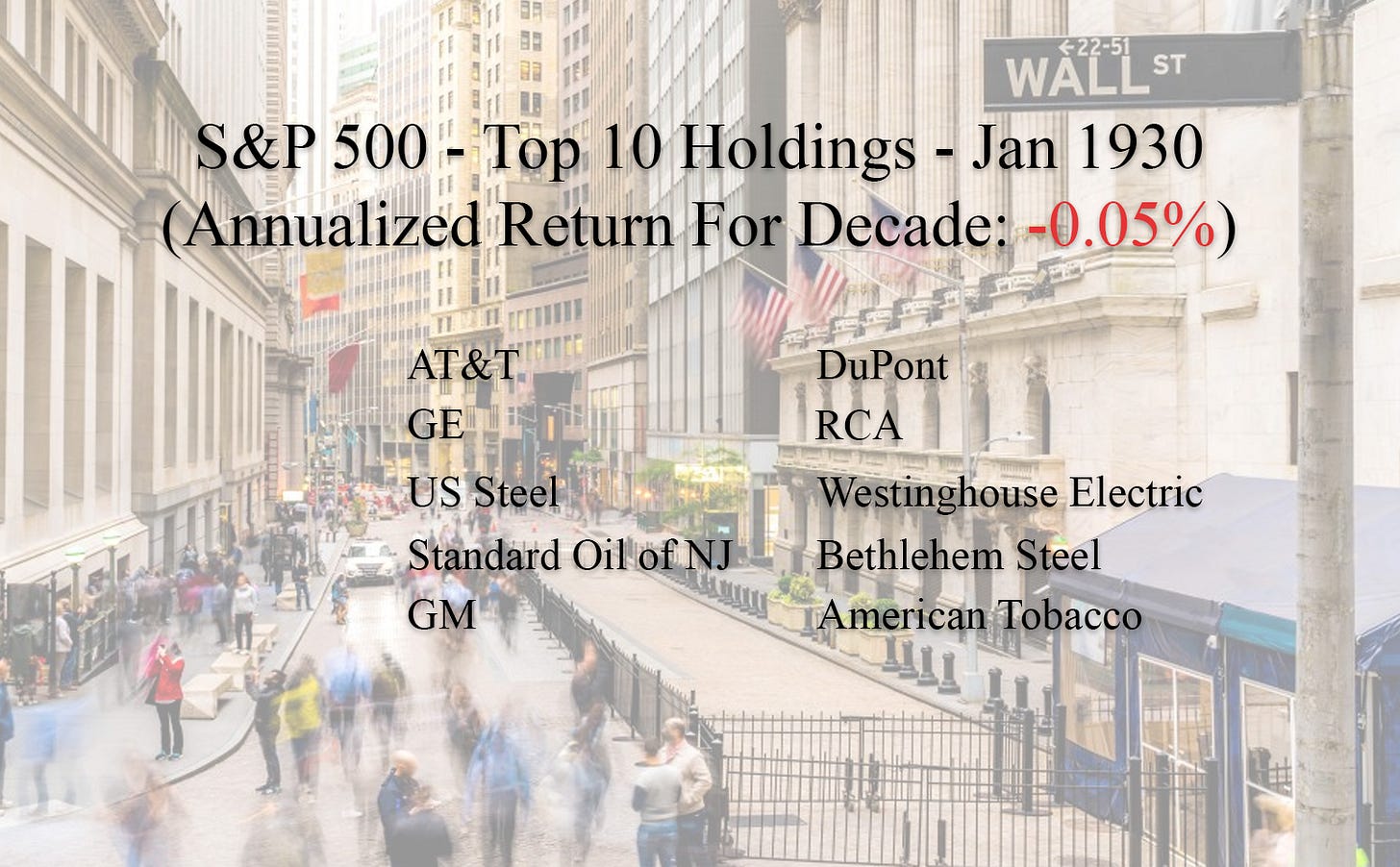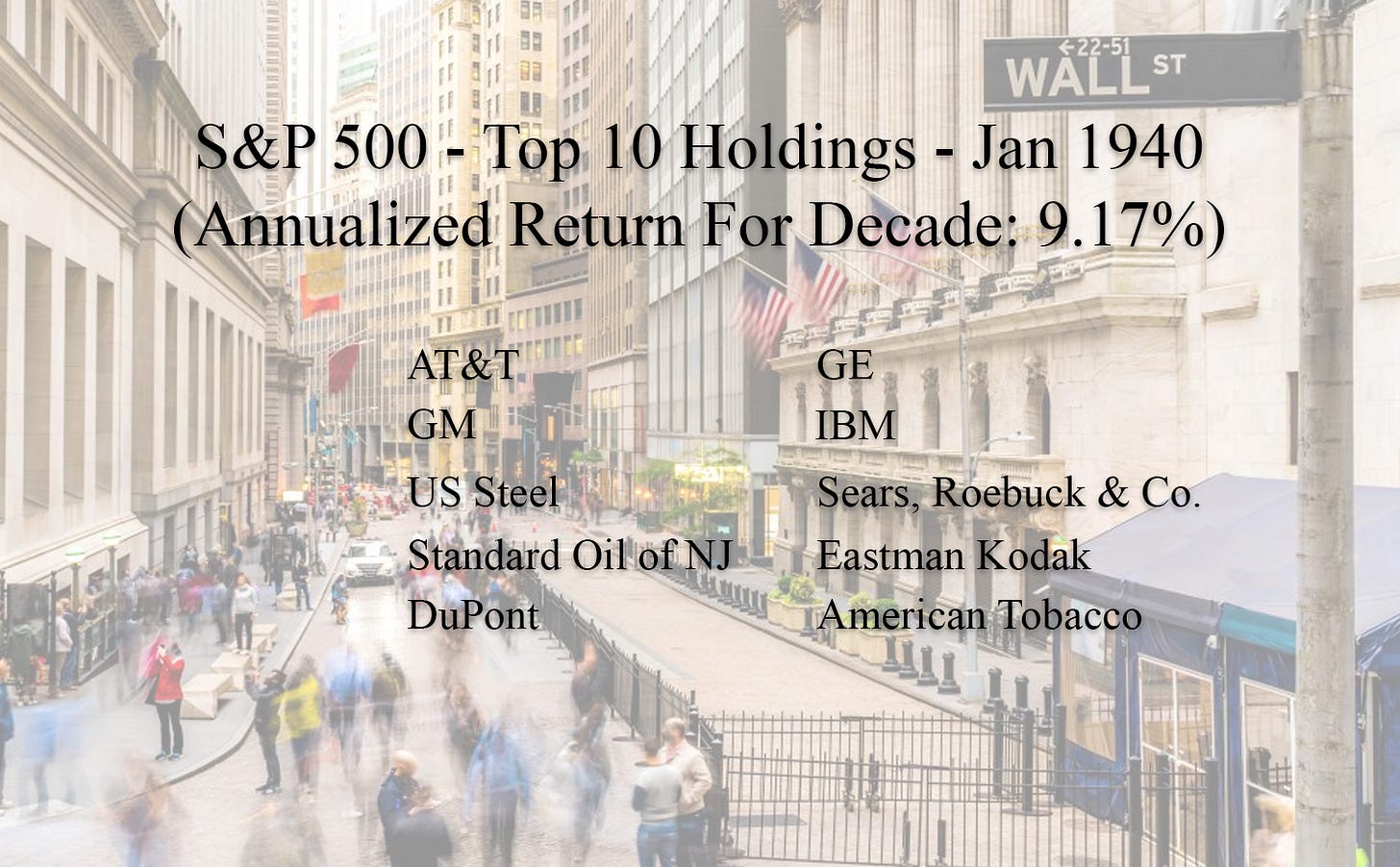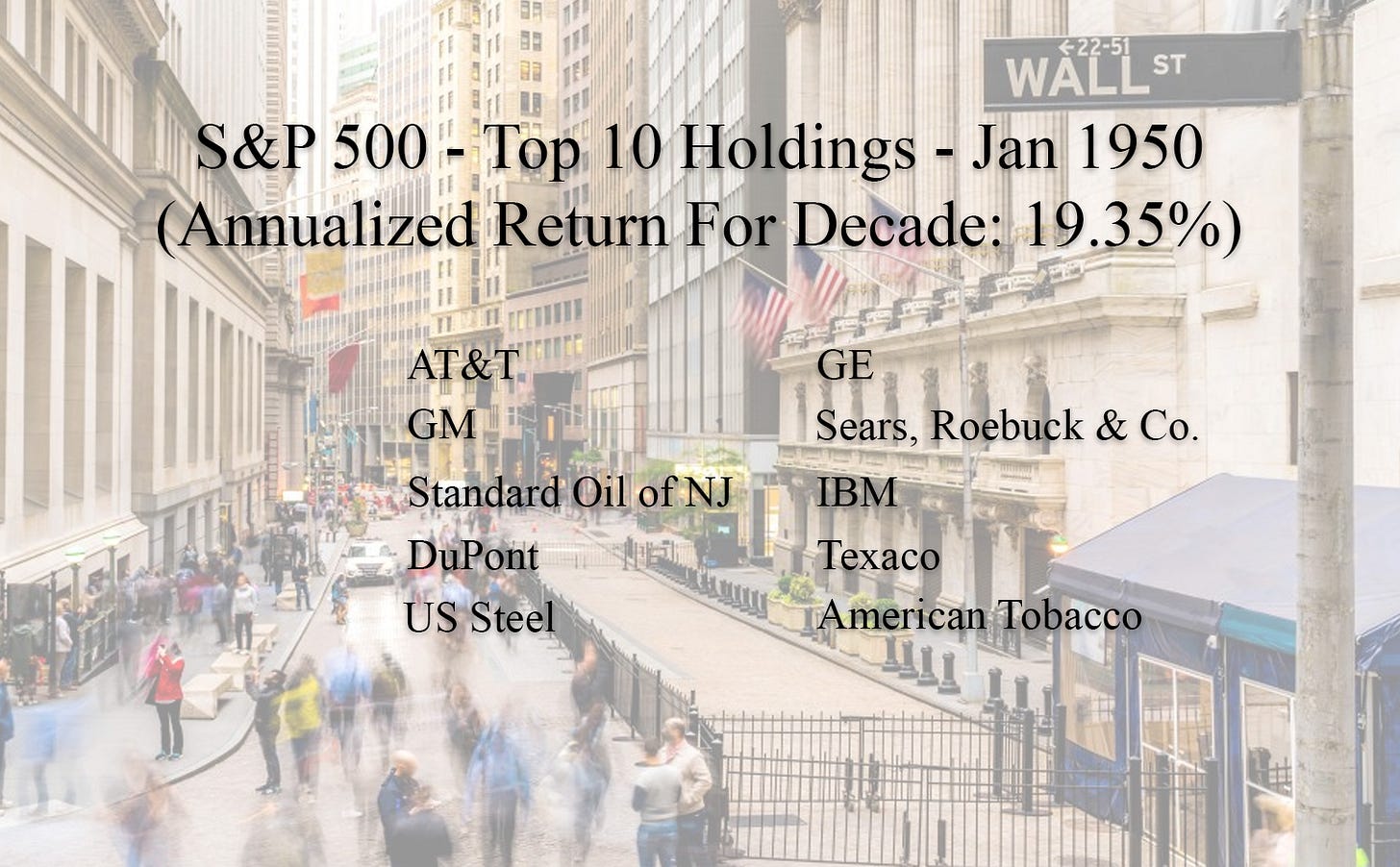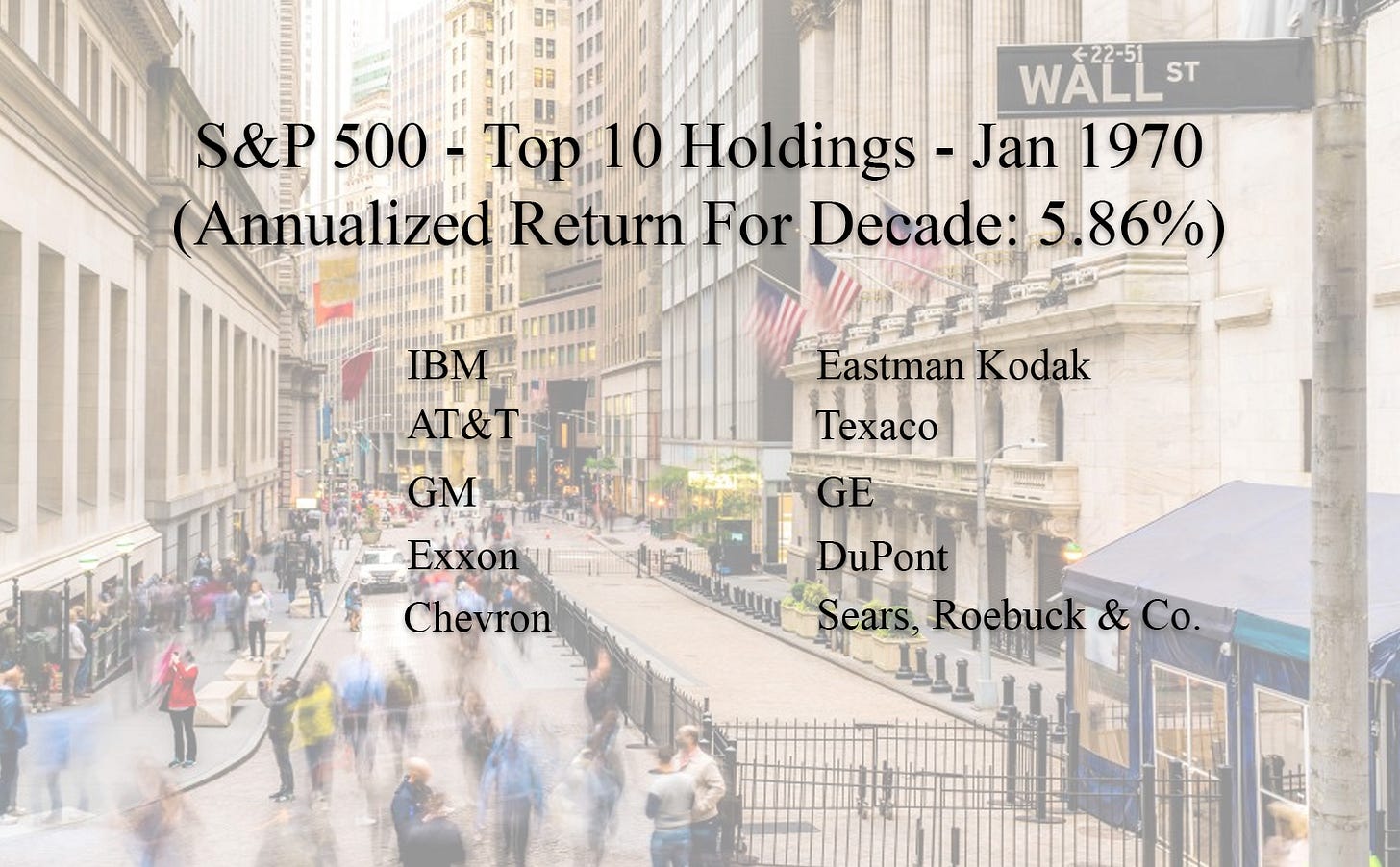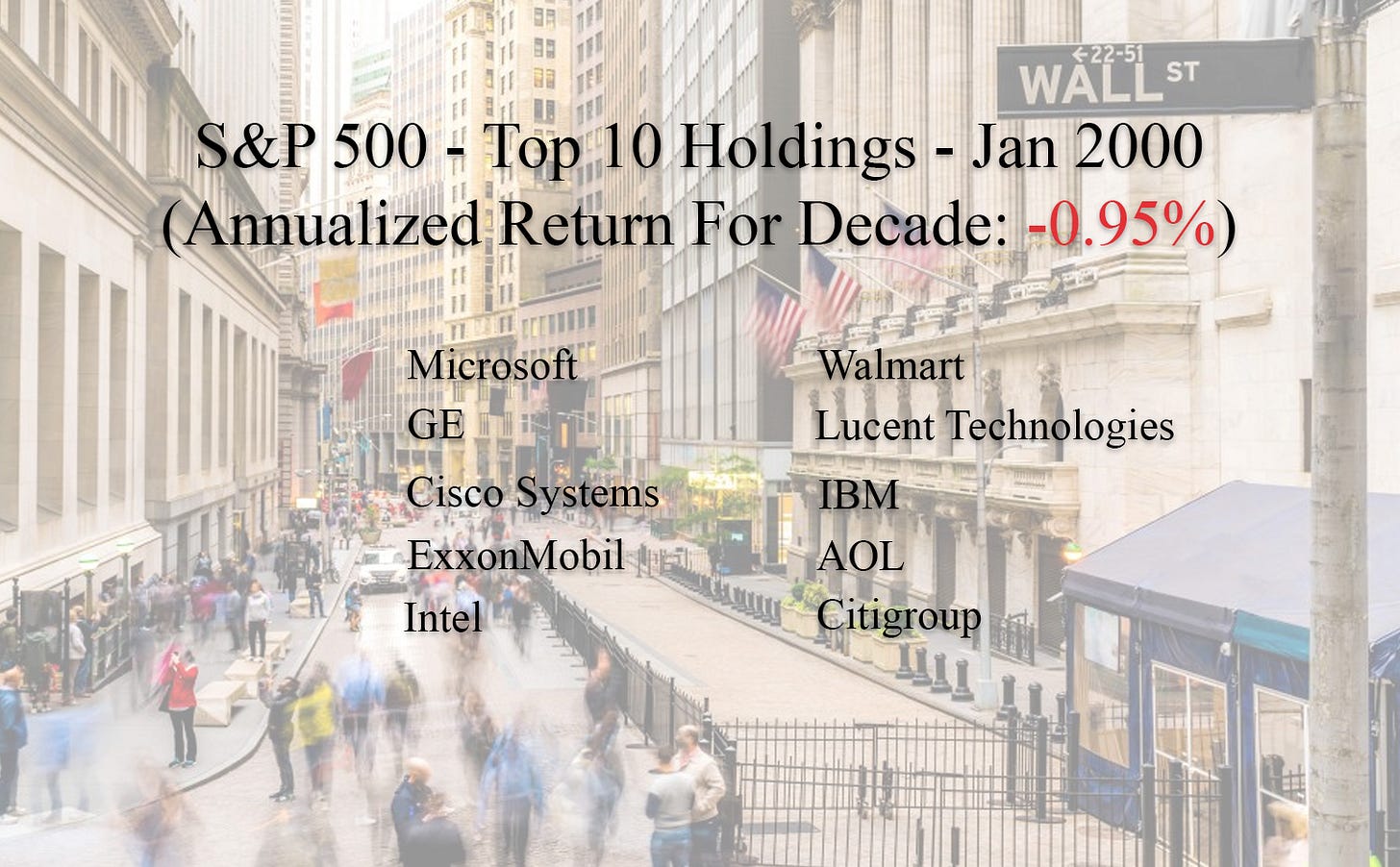Top 10 S&P 500 Stocks Over Time
A historical look at the companies driving the S&P 500
We’ve previously talked about how we like the S&P 500 Index because it is market-cap weighted. It essentially “rides the winners.” If you haven’t seen it before, check out our post, The S&P 500 Cheats (and so should you)!
Since the Top 10 stocks typically make up over 30% of the Index, we thought it would be interesting to see which stocks were driving the Index over different periods of time.
S&P 500 - beginning of 1930
As we entered The Great Depression, the Index was dominated by heavy industry and utility companies (notice there were no tech or finance companies). This period was the Wild Wild West for the stock market. The monthly volatility was twice that of any decade since.
The SEC wasn’t created until the passage of the Securities Exchange Act of 1934. Its primary purpose is to enforce laws against market manipulation.
We’ve mentioned that the long-term annualized return on stocks (since 1926) is around 10%. If we exclude the 1930s—which probably makes sense—the annualized return is a bit over 11%. When compounding over a long time period, this extra 1% makes a huge difference.
Here’s the Top 10 at the time:
S&P 500 - beginning of 1940
By the start of the 1940s, the US was beginning to recover from The Great Depression, and entered World War II in December 1941 after the attack on Pearl Harbor.
Sears and Eastman Kodak replaced Westinghouse and Bethlehem Steel in the Top 10.
S&P 500 - beginning of 1950
At the beginning of 1950, the US economy was transitioning from wartime to peacetime and entering a period of significant industrial expansion. Texaco entered the Top 10, replacing Eastman Kodak.
The 1950s were the best historical decade for stocks.
S&P 500 - beginning of 1960
At the beginning of 1960, the economy was booming, and industrial, automotive, energy, and telecommunications companies dominated the Index.
S&P 500 - beginning of 1970
At the beginning of 1970, the US was entering a period of high inflation, the Vietnam War, and a looming oil crisis. A recession in 1973 and 1974 was partly responsible for a below-average stock market return of 5.86% for the decade.
S&P 500 - beginning of 1980
At the beginning of 1980, the U.S. was emerging from a turbulent decade marked by stagflation, an energy crisis, and high interest rates. Microsoft and Apple were now public companies, but neither was near the Top 10 . . . yet.
S&P 500 - beginning of 1990
At the beginning of 1990, the U.S. stock market was transitioning from the industrial dominance of earlier decades into the early stages of the technology and financial revolution that would define the 1990s.
S&P 500 - beginning of 2000
At the beginning of 2000, the dot-com bubble was near its peak, and the top of the S&P 500 was dominated by technology and telecom companies, many trading at extremely high valuations. The stock market was nowhere near as volatile as it was in the 1930s, but the return for the decade was worse.
S&P 500 - beginning of 2010
At the beginning of 2010, the U.S. stock market was recovering from the 2008–09 global financial crisis. The S&P 500's top 10 companies reflected a transitional moment — legacy giants like ExxonMobil and GE still held sway, but tech leaders like Apple and Microsoft were rising fast.
S&P 500 - beginning of 2020
At the beginning of 2020, the S&P 500 was dominated by Big Tech, a trend that had grown steadily throughout the 2010s. The top 10 companies by market capitalization reflected the rise of the so-called “FAAMG” stocks (Facebook, Apple, Amazon, Microsoft, Google), which together accounted for a historically large share of the index.
S&P 500 - July 2025
As of the time of this post, eight of the top 10 stocks are part of the “Magnificent Seven” tech/AI heavyweights: NVIDIA, Microsoft, Apple, Amazon, Meta, Alphabet, and Tesla.
Riding the Winners
As you can see, the largest and best-performing companies rise to the top of the Index, reflecting what is driving the economy at the time. This is what we call “Riding the Winners.” It’s why the market-cap weighted S&P 500 Index is so hard to beat—even for professional managers.
It’s also why if you were invested in the Index in 2001, you got in early—automatically—on a little-known company Nvidia, and benefited from its rise to become the largest publicly-owned company in the world.
Best regards,
Stuart & Sharon


